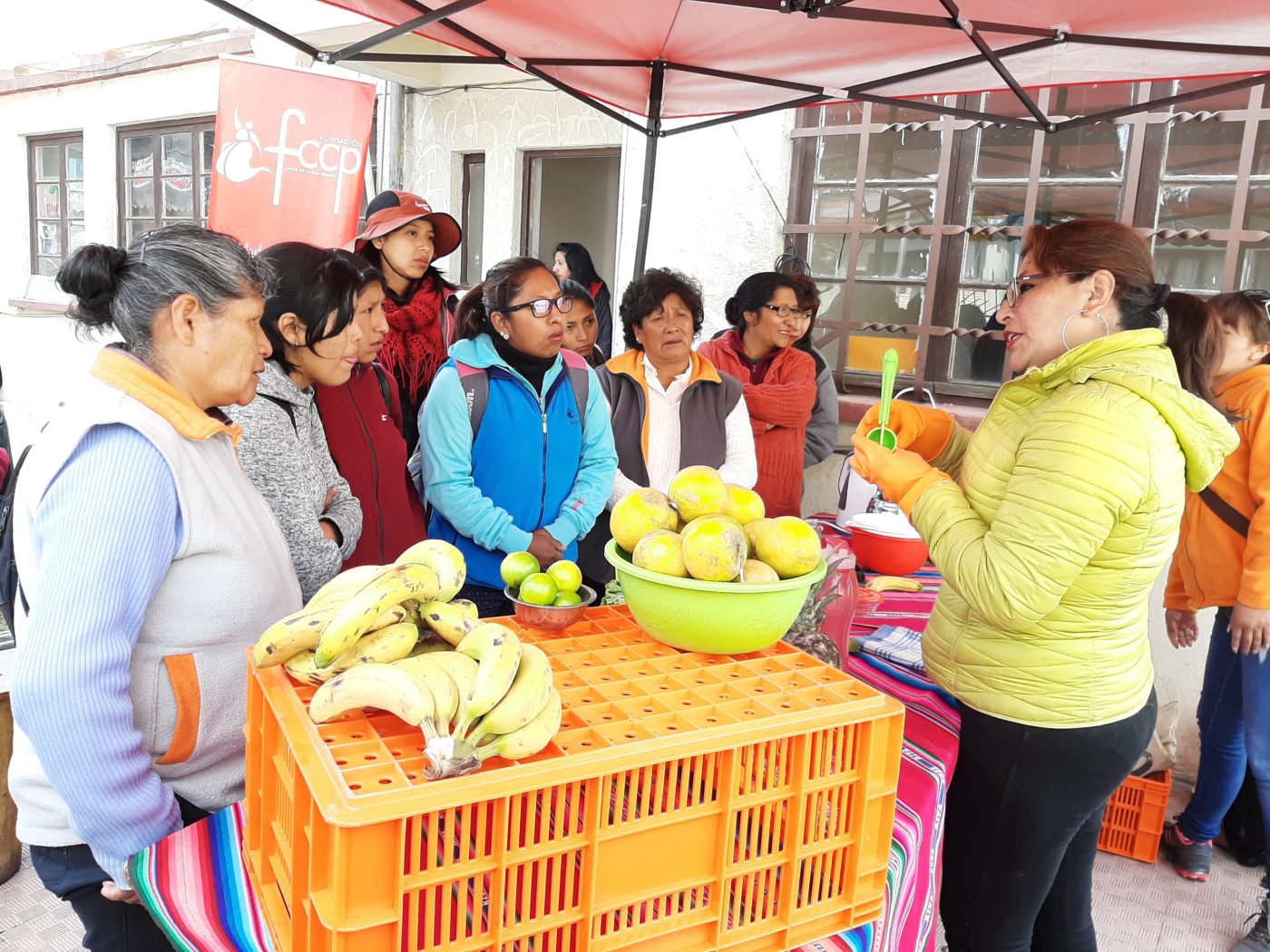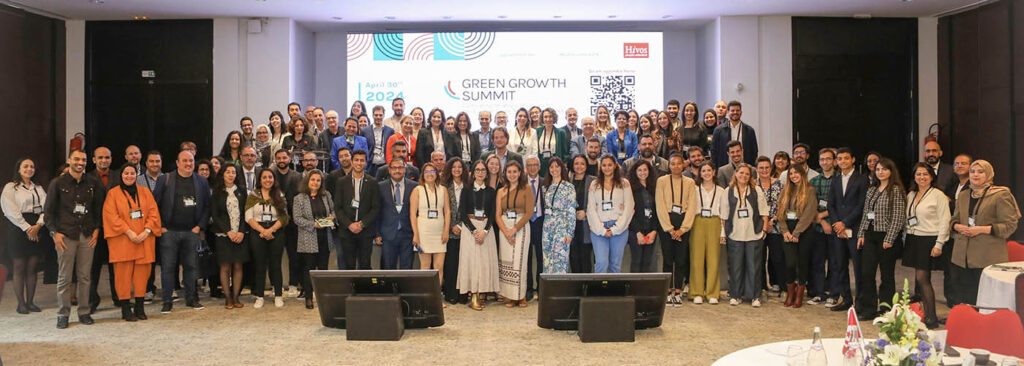Cooking is so much more than simply feeding ourselves to nourish our bodies. It’s about tapping into the creative, cultural, and emotional sides of the foods we’re eating. It’s about the art of planning and preparing our meals – buying natural and diverse ingredients, and watching those ingredients come to life in a tasty and enjoyable meal. It’s also something that the whole family can get involved in and have fun with.
Women leading food system change
In most households in Bolivia though, women are usually the ones responsible for buying and cooking the meals, with limited time leading to less nutritious meals for themselves and their families. This issue emerged as one of the main challenges in the Bolivia Food Change Lab, a multi-actor initiative started in September 2018 to address challenges in the local food system in La Paz. While there were many ideas for lobby and advocacy work within the government and private organizations, the women collectively decided that change would only come from a clear shift in values and cultural norms. Working within their own families and communities was the logical first step. They decided to shine a light on all the work that women do behind the scenes to get food on the table, not only the process of planning and preparing meals but also the mental burden of keeping up with the many tasks required to keep a household running smoothly. They sought to educate their families and communities about food and engage everyone – men, women, and children – in this process.

One of the prototypes, or small-scale interventions designed to test the workability of this solution, was a local campaign called “Cocina llena, corazon contento”, or “Full kitchen, full heart’’. The (digital) campaign includes small, educational “ferias” or festivals in low-income communities to raise awareness, as well as a book of stories and games about food that are geared towards children and feature traditional family recipes with indigenous Andean ingredients. We’ve translated a selection of these activities from the book for you to try at home.

Recipe for cañahua crepes
Cañahua is an indigenous and highly nutritious grain that is considered to be a “superfood”. This recipe for cañahua crepes is rich in vegetable and animal proteins, and contains vitamins E and B.
Number of servings: 4 (2 crepes per person)
Prep time: 15 minutes
Cooking time: 15 minutes
Ingredients:
2 eggs
1 cup of flour
2 spoons of cañahua powder
1⁄2 cup milk
1⁄2 cup of water
2 tablespoons of oil
1 pinch of salt
Preparation:
Children, supported by an adult, can break the eggs into a mixing bowl. They can then add the flour (better if passed through a sieve), cañahua powder, and milk, followed by the water, oil and pinch of salt. The children can then mix everything, passing the mixture through a sieve if it has any lumps.
Another adult can heat a pan, adding a few drops of oil and spooning a portion of the mixture into the pan, moving it around so that it covers the entire surface in a thin layer. Any leftovers can be returned to the bowl. It cooks very quickly. Turn it after 2 minutes and then flip to cook 1 more minute more on the other side.
Meanwhile, the children can choose fillings. Some options include: jams, natural yogurt, strawberry pieces, caramel, and sliced bananas. The crepes can be assembled by rolling them up or folding them like handkerchiefs.

Recipe for tarwi ceviche
Tarwi is a high protein legume grown in the Andes. It’s rich in vitamin C and fiber.
Number of servings: 4
Prep time: 15 minutes
Cooking time: 15 minutes
Ingredients:
3 cups cooked tarwi
1 handful of coriander
2 red onions
8 to 10 lemons
1 pinch of salt
3 sweet potatoes
Optional: green chili pepper
Optional: roasted corn
Preparation:
Children can wash the sweet potatoes and put them in a pot of cold water, while an adult lights the stove and boils the potatoes until they are soft. Everyone can peel the tarwi together by removing their white shells. Adults can then cut the lemons and the children can squeeze them to get approximately one cup of juice. One adult should cut the onion into julienne and the other can finely chop the cilantro.
The children should then add the tarwi, onion, cilantro, lemon juice and a little salt in a bowl, letting it rest for 10 minutes. When the sweet potato is cooked, an adult can drain the cooking water, peel the potato and slice it thinly. The ceviche (tarwi mix) should be served next to a slice of sweet potato, and can be accompanied with roasted corn and green chili pepper.
Family game: “We sell everything”
This game uses knowledge of the market and is fun for the whole family.
Place several random items of food on the counter and have each person select one of the products. Each person will have five minutes before going “on stage” and convincing the other family members to buy their product. Each person gets three minutes, and if in three minutes no one decides to buy it, it is the next person’s turn. The person selling his or her product should be as creative as possible:
- Talk about the product’s benefits.
- Explain recipes that can be made with that product.
- Make up a catchy song and dance.

Working on healthy diets together
Are you the primary person planning and preparing meals in your house or do you share this responsibility with others? With the focus on healthy diets this week for World Food Day 2019, we hope that you’ll take some time to think about the creative and cultural sides of the food you eat and how this can translate into your everyday meals. Hopefully these games and recipes have inspired you to plan healthy, diverse meals and cook them at home – with friends and family.




